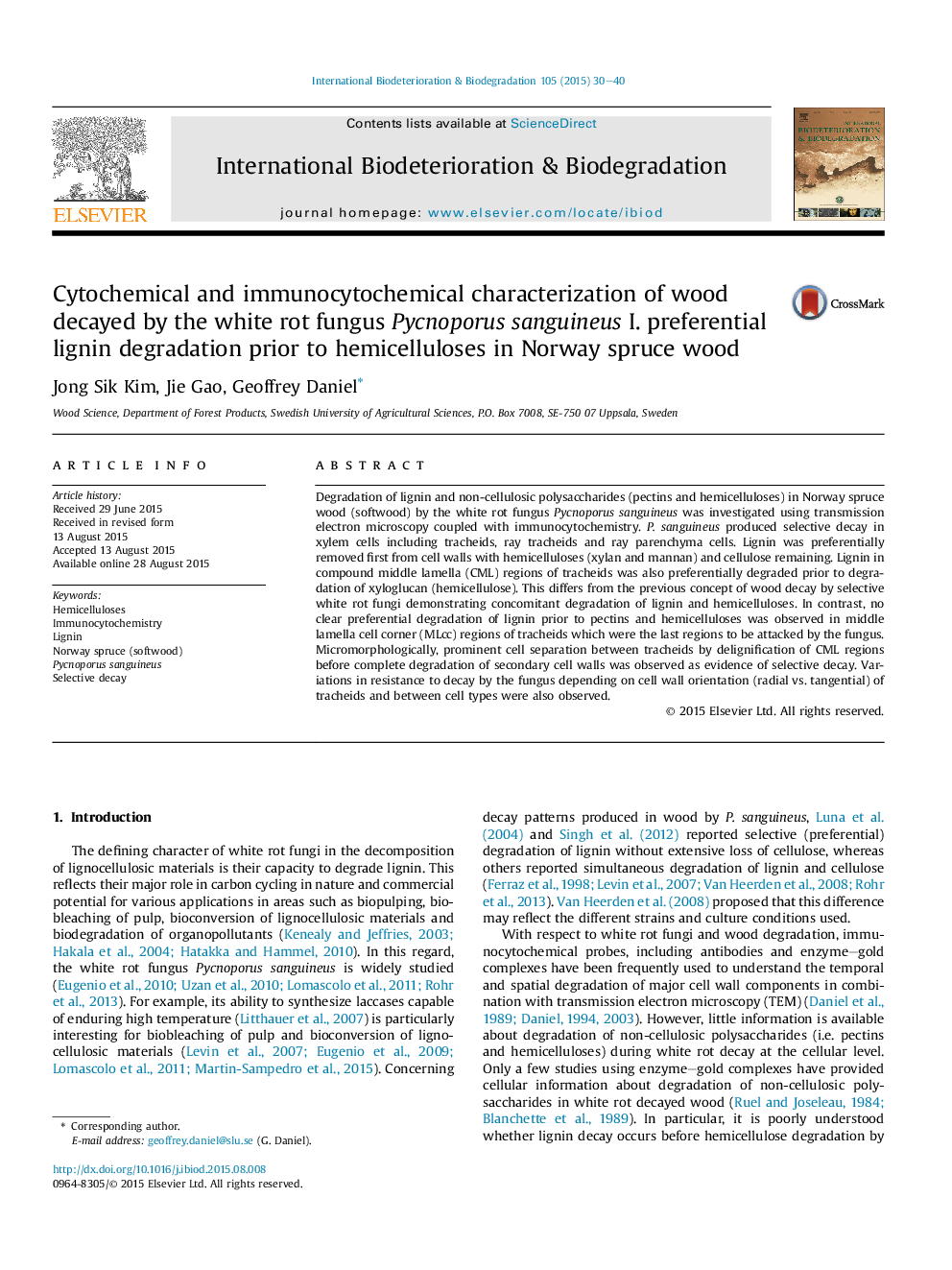| Article ID | Journal | Published Year | Pages | File Type |
|---|---|---|---|---|
| 4364308 | International Biodeterioration & Biodegradation | 2015 | 11 Pages |
•Degradation of spruce wood (softwood) by Pycnoporus sanguineus (white rot) was investigated using TEM immunocytochemistry.•P. sanguineus produced selective decay in xylem cells including tracheids, ray tracheids and ray parenchyma cells.•Lignin was preferentially removed from xylem cell walls with hemicelluloses and cellulose remaining.•Preferential lignin degradation prior to hemicelluloses differed from previous concepts for selective white rot fungi.•Variations in resistance to decay depending on cell wall orientation of tracheids and between cell types were observed.
Degradation of lignin and non-cellulosic polysaccharides (pectins and hemicelluloses) in Norway spruce wood (softwood) by the white rot fungus Pycnoporus sanguineus was investigated using transmission electron microscopy coupled with immunocytochemistry. P. sanguineus produced selective decay in xylem cells including tracheids, ray tracheids and ray parenchyma cells. Lignin was preferentially removed first from cell walls with hemicelluloses (xylan and mannan) and cellulose remaining. Lignin in compound middle lamella (CML) regions of tracheids was also preferentially degraded prior to degradation of xyloglucan (hemicellulose). This differs from the previous concept of wood decay by selective white rot fungi demonstrating concomitant degradation of lignin and hemicelluloses. In contrast, no clear preferential degradation of lignin prior to pectins and hemicelluloses was observed in middle lamella cell corner (MLcc) regions of tracheids which were the last regions to be attacked by the fungus. Micromorphologically, prominent cell separation between tracheids by delignification of CML regions before complete degradation of secondary cell walls was observed as evidence of selective decay. Variations in resistance to decay by the fungus depending on cell wall orientation (radial vs. tangential) of tracheids and between cell types were also observed.
